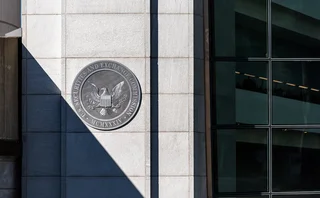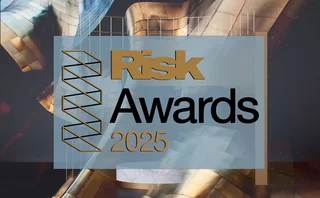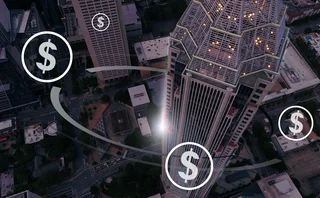
And so, farewell: David Rowe's final risk analysis column
After 16 years as our risk analysis columnist, David Rowe looks back with fondness at a recurring challenge that has been an integral part of his life for so long

The oceans rise and fall with musical harmony, their daily timing shifting with the phases of the moon. It is said that the rhythm of the tides is woven into a sailor's very soul. Writing this column for the past 16 years has given me at least a taste of this phenomenon.
In all honesty, I took on the challenge with some hesitation. I could visualise enough material for about three such columns, after that I had no clue what would come next. As the months unfolded, there was an almost tidal sense of rising and falling anxiety. Completing a column was followed by a sense of relief that lasted about two weeks. Then the next month's deadline would loom, building in urgency with each passing day. Eventually, the amplitude of this cycle ebbed as I found that, if I was listening carefully to the noise in the ‘arena', there was usually something to which I could devote 700 to 900 words of some interest. Add to that a few ‘evergreen' topics and the tides of anxiety eased, although they never disappeared entirely.
Looking back, it is startling to realise I began writing this column when the euro was less than a year old (and euro coins still had not been introduced), and discussion of Basel II was just beginning. Focusing on my original retirement date of 2010, I used to joke that it would be a near-run thing whether I would be around when Basel II went live.
Obviously, economic events have provided useful material over the years. When I started in late 1999, the dotcom boom was in full swing. Holding staff was a problem for any traditional vendor, since everyone in tech thought they would be a millionaire in six months if they went to work for a dotcom start-up. 2000 saw a prolonged legal wrangle over the outcome of the US presidential election. 2001 ushered in the dotcom bust and the long hangover that ensued. During these first two years, arguments over Basel II, especially the treatment of operational risk and improved counterparty risk measurement, were significant topics. Then along came 9/11 and global geopolitical issues assumed greater prominence.1
In 2003, Basel II continued to be a major topic, with particular attention given to the question of whether its provisions were pro-cyclical and, if so, how could that effect be mitigated.
The following year saw the emergence of attention to tail risk that was not effectively captured by value-at-risk, and my column in September 2004, titled Op risk and black swans, was devoted to a largely favourable review of the thinking of a little-known figure by the name of Nassim Nicholas Taleb.
Interest in Basel II continued in 2005, combined with a focus on tail risk. Two columns were entitled The new market risk challenge and Whither stress testing?, while the next year saw concerns about cyber security and its relationship to internet banking; geopolitical concern about the durability of China's dramatic success; and whether Japan's prolonged stagnation might come to an end. There was also continued discussion of Basel II and the appropriate role of stress testing in both risk management and regulation.
January 2007's column – A gathering storm? – focused on rising default rates on junk bonds, while the following month's column expressed concern about the dangers of consumers assuming un-hedged currency risk through low interest rate mortgages denominated in yen.
Columns in early 2008 (before September) pointed out senior management's ultimate responsibility for risk management; highlighted the dangers of self-referential feedback loops; emphasised the need for a backup means of objective valuation if liquidity failed; and questioned whether large trading firms really were too big to (be allowed to) fail.
Then in 2009 and 2010, attention turned to systemic risk and incorporation of softer and more qualitative considerations into risk management decisions. Accompanying this was consideration of how to modify risk systems and organisational structures to cope with these new realities. An important theme was the need to mitigate the severity of bank failures and not just to minimise their likelihood.
Since 2010, the euro crisis and technology transformation have emerged as major concerns. The risks in the world today look far more binary than they did 16 years ago. Regulation continues to command attention and the widespread migration of traditional banking functions into the non-bank sector raises a whole new set of concerns. I will continue to take a lively interest in these matters, but henceforth it will be from the sidelines. It has been a most interesting ride, but it is time for me to pursue projects that have been on hold for far too long.
And so, farewell to my readers and to the recurring challenge of writing this column that has been such a big part of my life for over a decade and a half. I trust my readers will do their best to constrain what Barbara Tuchman called "the march of folly" to whatever extent possible. It won't be easy, but it will continue to be ‘interesting'.
1 Risk publications lost 16 people in the World Trade Center attack, and two issues of Risk in early 2002 did not include the regular columnists as the organisation struggled to recover. These two months and some special anniversary issues are the only ones I have missed in 16 years
Only users who have a paid subscription or are part of a corporate subscription are able to print or copy content.
To access these options, along with all other subscription benefits, please contact info@risk.net or view our subscription options here: http://subscriptions.risk.net/subscribe
You are currently unable to print this content. Please contact info@risk.net to find out more.
You are currently unable to copy this content. Please contact info@risk.net to find out more.
Copyright Infopro Digital Limited. All rights reserved.
As outlined in our terms and conditions, https://www.infopro-digital.com/terms-and-conditions/subscriptions/ (point 2.4), printing is limited to a single copy.
If you would like to purchase additional rights please email info@risk.net
Copyright Infopro Digital Limited. All rights reserved.
You may share this content using our article tools. As outlined in our terms and conditions, https://www.infopro-digital.com/terms-and-conditions/subscriptions/ (clause 2.4), an Authorised User may only make one copy of the materials for their own personal use. You must also comply with the restrictions in clause 2.5.
If you would like to purchase additional rights please email info@risk.net
More on Risk management
SEC leadership change puts Treasuries mandate under scrutiny
FICC clearing models approved, but critics think delay could revive prospects of done-away trading
Markets Technology Awards 2025: Untangling the knots
Vendors jockeying for position in this year’s MTAs, as banks and regulators take aim at counterparty blind spots
Risk Awards 2025: The winners
UBS claims top derivatives prize, lifetime award for Don Wilson, JP Morgan wins rates and credit
An AI-first approach to model risk management
Firms must define their AI risk appetite before trying to manage or model it, says Christophe Rougeaux
BofA sets its sights on US synthetic risk transfer market
New trading initiative has already notched at least three transactions
Op risk data: At Trafigura, a $1 billion miss in Mongolia
Also: Insurance cartels, Santander settlement and TSB’s “woeful” customer treatment. Data by ORX News
Cyber risk can be modelled like credit risk, says Richmond Fed
US supervisors may begin to use historical datasets to assess risk at banks and system-wide
The changing shape of risk
S&P Global Market Intelligence’s head of credit and risk solutions reveals how firms are adjusting their strategies and capabilities to embrace a more holistic view of risk







